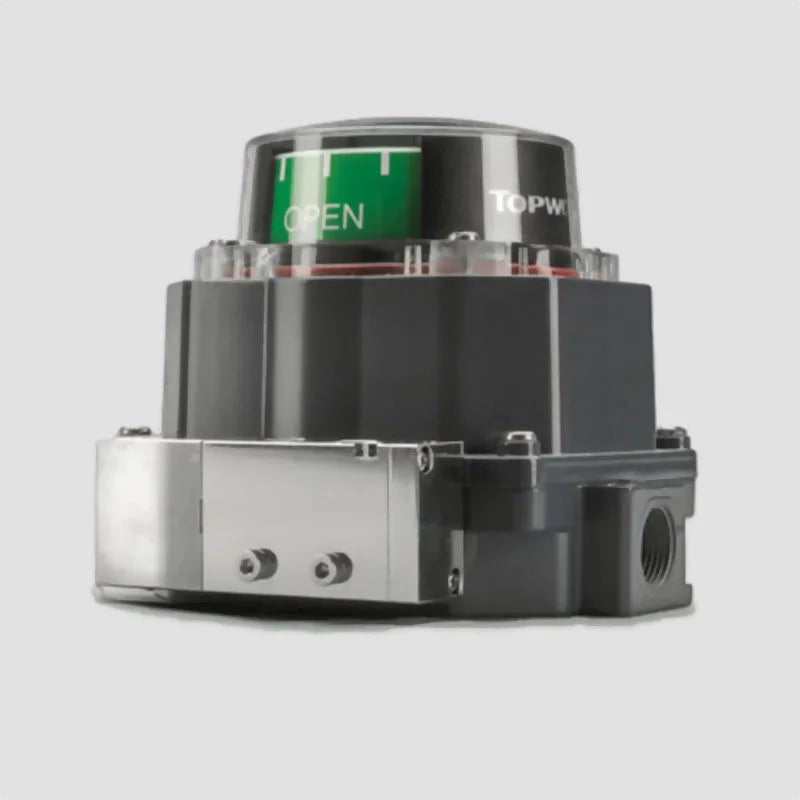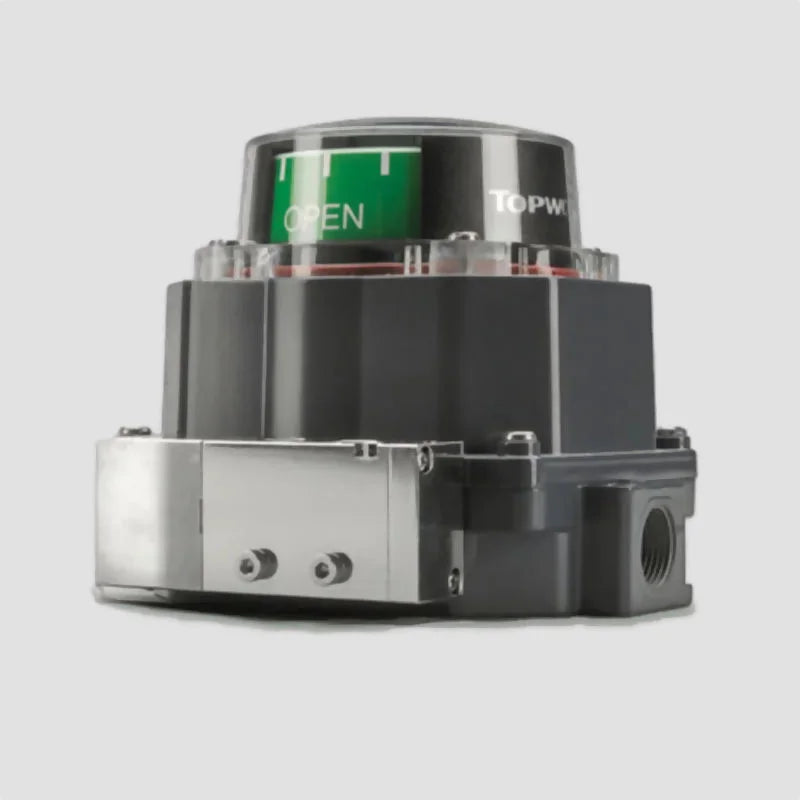Topworx Switchboxes
TopWorx Limit Switch Box TVL-R2WGNMM2A1 Valve Monitor
TopWorx Limit Switch Box TVL-R2WGNMM2A1 Valve Monitor
Couldn't load pickup availability
The TopWorx TVL-R2WGNMM2A1 Limit Switch Box is a compact, rugged, and high-performance valve monitor designed for on/off valve position feedback in industrial applications. Engineered by TopWorx, part of Emerson, this model is part of the TVL Series, offering high reliability, ease of installation, and clear visual and electrical indication of valve status.
This specific model includes 2 mechanical switches (SPDT) and a universal NAMUR mounting base, making it compatible with most pneumatic actuators. With its IP67-rated enclosure, the TVL-R2WGNMM2A1 is built to withstand harsh environments including chemical plants, pharmaceutical manufacturing, water treatment facilities, and food processing plants. Its tough and lightweight housing offers excellent corrosion resistance, making it ideal for both indoor and outdoor use.
🔑 Key Features:
2 Mechanical SPDT Switches: Accurate open/closed valve feedback
NAMUR Mounting Standard: Universally compatible with pneumatic actuators
IP67 Enclosure: Dust-tight and waterproof for demanding environments
Visual Position Indicator: Dome-style indicator shows live valve status
Robust Construction: Corrosion-resistant glass-filled polyester body
Dual Conduit Entries: 2 × 1/2" NPT for wiring flexibility
Field Proven Reliability: Trusted TopWorx quality in global applications
Wide Operating Temperature Range: Suited for extreme conditions
📊 Product Specifications
| Specification | Details |
|---|---|
| Model | TVL-R2WGNMM2A1 |
| Manufacturer | TopWorx (Emerson) |
| Series | TVL Series |
| Switch Type | 2 × SPDT Mechanical Switches |
| Visual Indicator | Dome Position Indicator (Open/Closed) |
| Mounting | NAMUR Standard |
| Enclosure Rating | IP67 (Water & Dust Tight) |
| Conduit Entry | 2 × 1/2” NPT |
| Housing Material | Glass-Filled Polyester (Corrosion-Resistant) |
| Operating Temperature | -40°C to +85°C |
| Certifications | CE, CSA, ATEX (varies by configuration) |
| Applications | Pneumatic Actuators, Process Automation, General On/Off Valves |
The TopWorx TVL-R2WGNMM2A1 Limit Switch Box is built to perform under pressure. With industry-standard compatibility, robust environmental protection, and dependable position feedback, it’s the smart choice for valve automation professionals seeking peace of mind and performance in every cycle.
For expert advice or to check availability, get in touch with our team today!
Share

FAQ's
What is the difference between a valve and an actuator?
What types of actuators are available?
The main types of actuators are:
Pneumatic actuators – use compressed air for fast, reliable operation.
Electric actuators – use electrical power for precise control.
Hydraulic actuators – use fluid pressure for high-torque applications.
Each type offers unique advantages depending on the environment, media, and system control needs.
How do I choose the right actuator for my valve?
To select the correct actuator, consider:
Valve type and torque requirement
Power source available (air, electric, or hydraulic)
Operating environment (temperature, humidity, hazardous area)
Control signal type (on/off or modulating)
Matching actuator torque and compatibility with the valve’s ISO mounting ensures reliable performance.
What are the main types of valves used in automation?
The most common valves in automated systems include:
Ball valves – for tight shutoff and quick operation.
Butterfly valves – for larger flow control with compact design.
Globe valves – for precise throttling and flow regulation.
Check valves – to prevent backflow.
Gate valves – for full bore flow isolation.
What’s the difference between a double-acting and spring-return actuator?
Double-acting actuators use air (or power) to both open and close the valve.
Spring-return actuators use air to open (or close) the valve, and a built-in spring to automatically return it to a safe position when power or air is lost — ideal for fail-safe operation.
How often should valves and actuators be serviced?
Regular maintenance intervals depend on operating conditions, but a good rule of thumb is to inspect every 6–12 months.
This includes checking for leaks, lubrication, seal wear, and actuator responsiveness to prevent unexpected downtime.

